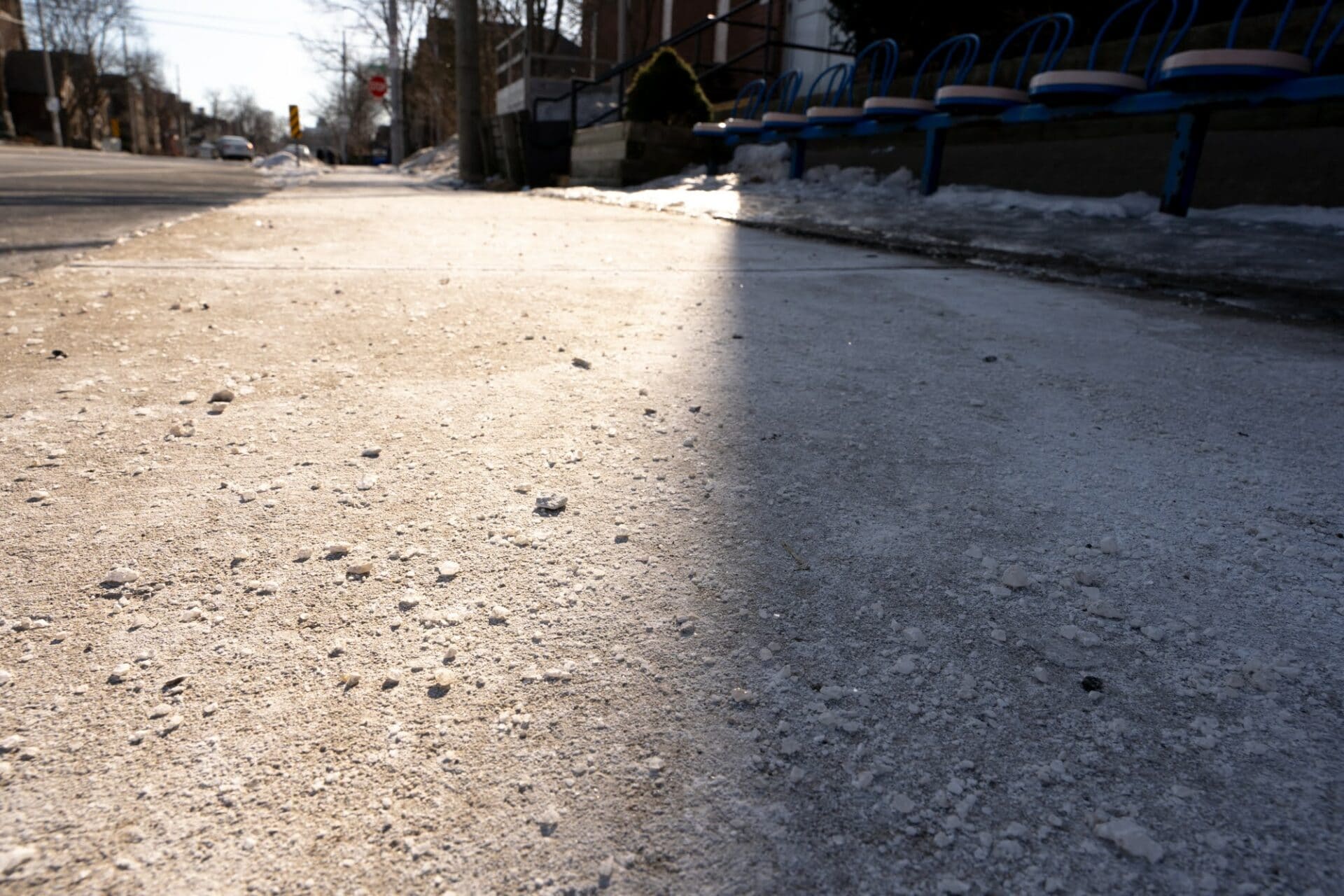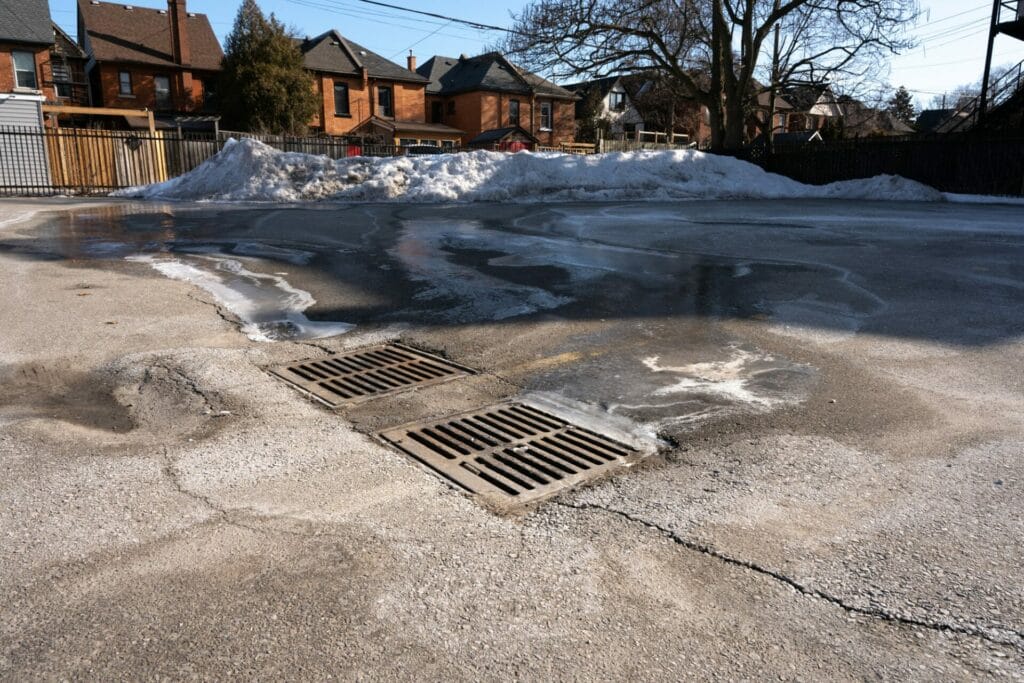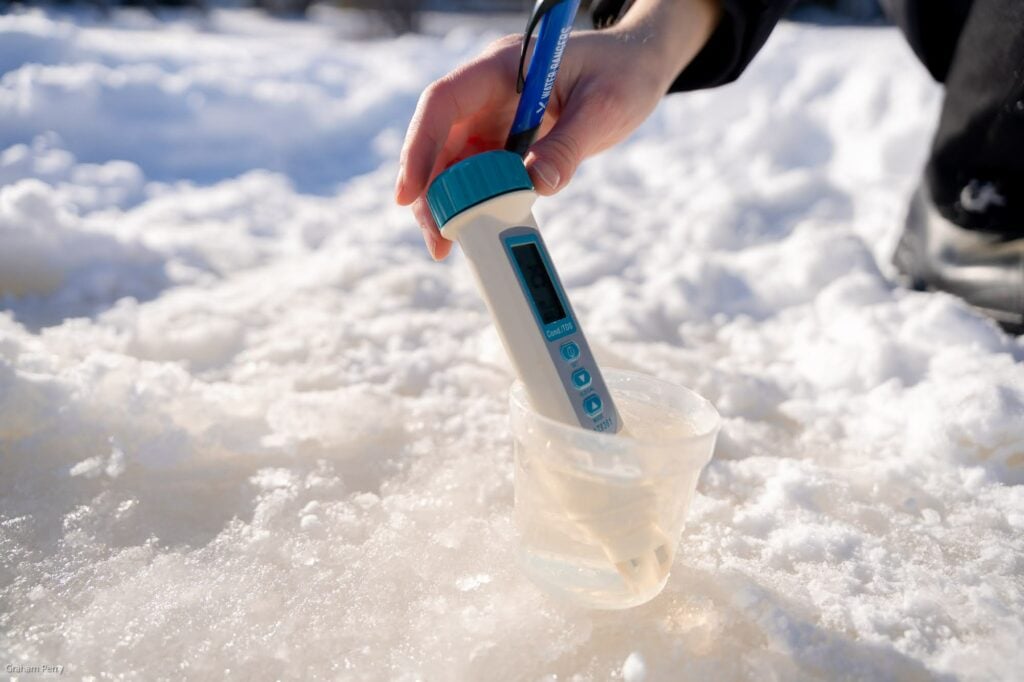Community-based water monitoring as a way to measure road salts in freshwater

March in the colder parts of North America signals the beginning of spring, with ice off and snow melting. Freshly exposed streets and sidewalks in urban areas are usually not at their loveliest. The pavement is often a museum of winter’s discarded cigarette butts, dog poo bags, and mounds of leftover road salts.
Road salts are a cheap and efficient way to melt snow and ice. They keep roadways and sidewalks safe for travel. In fact, road salt applications decrease road accidents by a whopping 80 percent.
The most common salts applied to our roads are inorganic sodium chloride, followed by calcium chloride and magnesium chloride.
What happens when road salts enter freshwater environments?

Our reliance on road salts to keep travel safe during the winter has caused a host of environmental repercussions. The salts applied to roads, sidewalks, stairs, and other hard surfaces make their way into waterways during rainfall events and snow melts. Salt infiltration impacts surface water, groundwater, and soil as salty water gets absorbed into the ground. As a result, the increased salinity negatively affects the biodiversity and function of ecosystems; ecosystems become weaker; and finally, drinking water and human health can suffer.
As more and more salt makes its way into our waters, soils see varied impacts. An increase in salts in the groundwater can reach a level where shallow wells produce undrinkable water. Excessive salt reduces soil fertility which can damage plants as well.
Water monitoring has found that chloride concentrations downstream from major roads in Canada have are up to 31 times higher than comparative upstream concentrations. These levels resemble levels found in salt-water estuaries. (Cañedo-Argüelles, 2013).
The Cary Institute of Ecosystem Studies has researched road salt for nearly two decades. It has found long-term trends that road salt accumulates in the environment. Moreover, research finds that salts can persist in these environments for years. Finally, concentrations continue to increase for years, perhaps even decades, after road salt is no longer applied.
Conductivity as a tool for measuring roads salts in aquatic ecosystems

We now understand that road salts are negatively impacting our freshwater ecosystems. Still, there is much to learn about the extent of the damage, where road salts are making their way into the water, and which waterbodies are impacted and to what degree. Communities, scientists, and governments are working to address the problem, but we need more data.
This is where community-based water monitoring can really help.
Volunteers can test for the presence and levels of road salt in our streams by measuring conductivity levels in freshwater bodies. Conductivity is a parameter that can be easily measured and understood. Conductivity is typically measured with a conductivity meter.
Chloride is another parameter used as an indicator of road salts.
What is conductivity?
Conductivity is an important metric that correlates to aquatic ecosystem health. What’s more, it can act as a tool for citizen scientists to participate meaningfully in water quality monitoring. Conductivity varies widely in watersheds impacted by road salts throughout the year. It increases significantly in the winter months, and can reach levels that challenge the health of aquatic life.
How you can help
It’s essential to change our winter road salt practices, as we know there are undeniable repercussions to salting roadways. You can help by contributing to water monitoring efforts to help better understand where hotspots are, establishing baseline data of freshwater bodies, and filling data gaps. Supporting monitoring can empower the public to contribute data to this help better understand the scope and impact of road salts.
Groups at work: Measuring road salts in the field
Get to know some of our Water Rangers monitoring road salts in their waterways! We’re excited to present some of the groups monitoring road salts in our waterways.
Illinois River Water Network – Winter Chloride Watchers
Citizen scientists from the Illinois RiverWatch Network and Missouri Stream Team share their data on winter chloride concentrations associated with road salt use.
Stoney Creek Environmental Committee – Road Salt and Salmon Project
The Stoney Creek Environment Committee (SCEC) Road Salt and Salmon Project is a two-part (monitoring and experiment) project investigating the effects of road salt contamination on salmon
Interested in using conductivity to measure road salts in your waterways?
You can purchase conductivity meters at our online store.
Still have questions? Contact us!